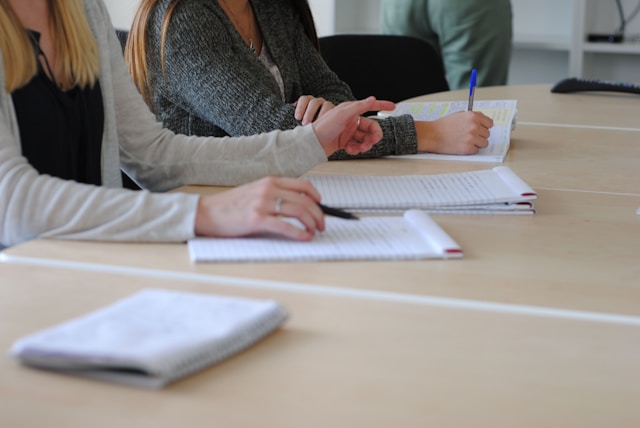Key Highlights
- In Canada, most schools begin classes between the start and middle of September. This depends on the laws in each province and what each school board decides.
- The academic year usually goes from September to June. Major school holidays like Labour Day and Victoria Day can affect the school schedule.
- Each province’s education ministry sets the school year calendar, but private schools and special programs, such as the International Baccalaureate, can choose different dates.
- Public school holidays include March Break, Easter, and some days off for big events like Canada Day.
- Knowing the right school year calendars helps families plan trips, school holidays, and other educational activities.
Canada’s education system is run by each province and territory. Because of this, the academic year can be different from place to place. Most schools in the country usually start in September and finish in June. There are holidays and breaks within this time.
It is important for parents and students to know these school schedules. This helps them plan what they need to do during the year. If you are looking at private schools or public schools, it helps to know details like the exact first day of school. Being prepared with these details makes it easier to settle into the new year. Take a look below to find out more about Canada’s school calendars.
Overview of School Start Dates in Canada
The start of the school year across Canada is not the same in every province or territory. But most schools begin classes in early September. Many schools match their first day with Labour Day, so the dates are similar across most public schools. The Ministry of Education in each province is in charge of setting the rules for the school year calendars. Most parents check announcements from their school board for details about when the school year or academic year will begin and end, as well as for dates for holidays like Victoria Day.
The provinces also set out clear rules for their school year calendars. They make sure schools follow standards from their education ministries and fit all the required school days into the year. It is important for families to know about the differences between provinces. This helps people plan family time around school days and the academic year. School districts can sometimes offer different school year calendars if local needs change, but they still have to include the right number of school days. It is important to know these school year dates and rules for good planning and to keep everything running smoothly.
Importance of Knowing Accurate School Start Dates
Accurate school year calendars help parents and students know when the first day of school is. This is important because families can use this information to plan vacations, set up daycare, or arrange after-school activities. School boards share schedules that meet all the rules from the province. This lets families get good and reliable information on time.
Another good thing is that school boards can change their calendars if they need to. This helps school districts that have many special days, like days when only teachers work, or other big events during the year. Families should check these updates so they do not have double bookings.
Also, knowing when school starts is not just about planning or timing. It helps students get ready to go back to class after a break. The school year often starts in early September, right after Labour Day. This time lets students ease back into their routine and get ready for the school year ahead.
How School Start Dates Vary Across Provinces
School start dates in Canada change depending on where you are. The ministry of education in each place plans the academic year, so the schedule fits local needs. This is to keep things the same in most places but still leave room to adjust if something comes up. Most schools in the country start in September, but there can be changes because of local issues.
The ministry of education in each province creates its own plan for when school starts and ends. The rules are there, but each province can still do things a bit differently. For example, British Columbia often starts the academic year around Labour Day. In Quebec, schools might give more time to personal development and after-school activities.
Some places, like Nunavut, have to deal with special conditions because of where they are. This makes understanding what changes school schedules even more important. The type of school—public, private, or special programs like the International Baccalaureate—can also make a difference. Knowing about each province’s choices helps families get ready for school in the best way. Now, let’s look at school start dates in each part of Canada.

Detailed School Start Dates by Province
In Canada, the first day of school is not the same in every place. Each province has its own rules and many watch different holidays, like Labour Day and Canada Day. Most of the time, kids go back to school right after Labour Day. Still, there may be some changes in the dates, as every school board, or a new rule, can move the first day a little.
Holidays, such as Victoria Day and Canada Day, help set when the school year starts and ends across provinces. To understand how things work in Canada, we need to look at a few regions. Let’s see when school starts in British Columbia, Alberta, Ontario, Quebec, and Nova Scotia.
British Columbia
In British Columbia, schools are part of a school district. Each district works to set the school year in a way that lines up school days with Labour Day and Victoria Day. The first school day almost always happens in early September. Labour Day is a public holiday. It marks the end of summer, so families can get into the new school routine in an easy way.
The school boards in the province plan school term dates with care. They make sure the dates follow what the province says. Victoria Day often affects when spring break happens. This gives students a break before they finish the rest of their school days. The way school boards set up the schedule helps every student work toward their goals and have a steady plan.
Each school district can bring in some flexibility. School teams can fit extra holidays and training days for teachers into their schedules. This keeps learning going without much stop. Schools in British Columbia try to keep a clear and set school calendar. Because of these steps, both students and parents can rely on the year running from September to June, with main breaks around Labour Day and Victoria Day.
Alberta
The school year in Alberta is made to fit around big holidays like Family Day, Good Friday, and the summer break. Schools start in early September, right after Labour Day. This way, all the schools have about the same schedule. Family Day is in February and gives students a break in the middle of the year. It is a good time for rest and for educational activities.
Good Friday is also a big part of the school year. It helps decide when schools close in the spring. Easter Monday is part of this break as well. These holidays let families have time for special moments or religious events. The school holidays do not get in the way of learning.
School boards in Alberta also make time for teacher training days. The rules in the province help keep the right mix between school days and days off. This helps students with their personal development as they move from September to June. Alberta’s school holidays and break times are set up so students can focus and have time to rest too.
Ontario
Ontario schools start their academic year in early September, with Labour Day as the main holiday at the beginning. The school schedule is set so there are at least 194 school days. Important breaks, like Family Day in February and Easter Monday in April, give students and teachers some time to rest.
March Break helps students in Ontario relax and try new things outside of class. Canada Day comes when summer is ending, and people start to get ready for the next academic year. Each school board plans these holidays into the school calendar so everything works well.
There are also professional activity days in Ontario, so teachers get time for training. For families, this balanced calendar helps them use long weekends for study or just spending time together, if they want. Having both learning and free time during the school days from September to June gives students a good chance to do well.
Quebec
Quebec’s students begin the school year in early September. This lines up with the province’s special way of running its school calendar. March Break is important. It gives everyone a break during midwinter. This well-timed pause helps schools work on personal development programs but does not slow down learning.
Quebec, more than other places in Canada, puts a lot of thought into personal growth and activities outside class during the school year. Public holidays, such as Easter Monday and Canada Day, are key times for students to rest and join in with what makes their culture special. These holidays also affect how school days are set.
The ministry of education in Quebec lets school boards shape the school calendar. They must make sure it fits with goals set by the province. There is a balance between teaching and the need for students to relax and recharge. This sets up a good space for all students to do well and grow in what they learn and who they are as people. With breaks like Easter Monday, March Break, and Canada Day spaced through the year, Quebec schools help students keep learning and building themselves in many ways.
Nova Scotia
In Nova Scotia, the school year is built to support the local way of life and strong learning goals. The school calendar starts in September and ends in June, making the most of student energy and readiness. The start each year is set to connect with Labour Day. This helps the school schedule work best for all students.
The school boards in Nova Scotia add holidays like Labour Day, Easter Monday, and Family Day to the calendar. This gives students and teachers the rest they need through the year. During these breaks, teachers use the time for training and to plan better ways of teaching. This helps make the educational system work well.
A big part of the school year in Nova Scotia is the International Baccalaureate program. This program and other educational activities help students grow in many areas. As well as lessons, kids join in club activities and sports that are part of the school. These activities support their personal development and help them become well-rounded people. With its mix of special programs, important holidays, and regular term breaks, Nova Scotia’s school year helps young people grow both in class and in life.

Factors Influencing School Start Dates
There are many things that decide when schools in Canada start. These things include rules set by the province and the differences between public and private schools. Ministries of education make calendars for each area. They look at what the people there need. They also make sure school days and holidays match up well.
The schedules are a bit different for public and private schools. Public schools must follow the ministry rules exactly. But private schools can choose to set their own dates. This means they can match their school days with the way they plan to teach and with their own educational activities. Let’s look at how these factors shape when schools in Canada hold classes, and how both public and private schools pick start dates for their school days.
Provincial Regulations and Policies
Each part of Canada has its own set of rules set by the ministry of education. These rules tell schools when to open, when to have holidays, and when teachers have days just for work. Schools have to meet a minimum number of days for learning, often about 194 days a year in public schools.
Some rules can be changed if a school board needs a different calendar. This way, schools can fit in local holidays but still focus on what the students need to learn. It also helps families know when their kids will be in school and when they will be off, so it’s easy for them to plan ahead and have some family time.
The government in each province watches over these rules to make sure they are fair for everyone. Parents can plan their year because the school calendar stays steady from one year to the next. School always starts around Labour Day and ends around Victoria Day. These rules match schedules for learning all over Canada. Knowing about these rules helps you get the most out of the Canada education system during its academic year.
Public vs. Private School Considerations
Public schools in Canada must follow rules and dates made by the government. These public institutions stick to schedules based on set guidelines. Private schools, though, have the power to make their own schedules. This means they can change their school days to fit special educational activities. For example, they may have programs like the International Baccalaureate that need a different setup in the academic year.
Public schools have to line up their breaks and holidays with days like Canada Day and Family Day. That way, everyone knows those important dates. Private schools may change their term dates. Sometimes they add days off for religious reasons or to match international timelines when they follow world programs like the International Baccalaureate. This helps some students take part in events important to their culture or studies.
Still, the goal of both types of schools is to make the academic year better for students. They want kids to do well at school and be happy. If a family wants to understand more before picking a public or private school, they need to look at what makes each one different—like how they set their school days and holidays. Knowing this can help parents and students plan for the year and get ready for changes. With this in mind, both public and private schools work to balance what is needed to make every school year good for students and their families.

Frequently Asked Questions
What is the earliest school start date in any Canadian province?
The first day of school in Canada usually happens in the first days of September, right after Labour Day. In provinces such as Alberta and British Columbia, the academic year often starts in the first week of September. This is when students across the nation go back to school.
Are there provincial differences in school calendar adjustments for weather or emergencies?
Yes, rules in each province let schools handle days off because of bad weather or emergencies in the school year calendars. School boards often change the school year schedule to make up for school days missed when things like snow keep schools closed. They do this so students get the right number of school days. These local changes help keep things on track and put student safety first.
